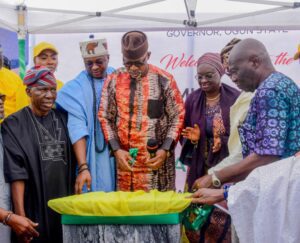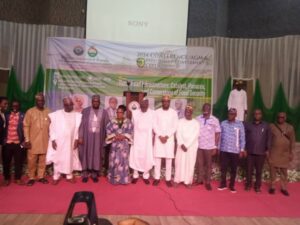
Other notable areas of effective public speaking and presentation skills
By Goke Ilesanmi
Last week, we said there are essentials of good writing that must be applied in speech-writing. We explained that some of these are conciseness, completeness,correctness, clarity and consideration.
We added that courtesy, positive language, concreteness and sincerityare also parts of these fundamentals.
We said conciseness is about being brief and direct to the point. We added that, however, being brief does not mean that completeness must be sacrificed.
We explained that completenessinvolves covering all necessary areas in a piece of writing so as to offer readers detailed and relevant information.
As regards correctness, we said a piece of writing must be correct or accurate in information, style and structure. That is, you must apply the right language, format and factual information.
We said clarity is about avoiding word-order-induced ambiguous statements such as “New staff problems,” which can mean “Problems faced by new staff” or “New problems faced by existing staff.” We said apart from the ambiguity (double or multiple meanings) leading to lack of clarity; misuse of tenses, concord, etc., can also cause lack of clarity through complexity.
We explained that consideration is aboutputting readers in mind at all times. We said courtesy is about building goodwill for yourself and/or comfortably selling yourself.
We explained that positive language is about using positive words instead of words that sound negative to communicate positive expressions.
We said concreteness is about being specific not obscure or vague. We concluded that sincerity is about avoiding exaggerations, fabrications, etc.
Choosing a personal style and delivery methods
Style refers to the way in which an idea is expressed or something is done. The writing or speaking style consists of the particular choice of words a writer or speaker uses (diction) and the manner in which those words are combined into phrases, clauses, sentences, etc.
Style is so important because most readers or listeners arbitrarily determine the personality of a writer or speaker from the writing or speaking style. A boring style therefore implies a boring person. A lively and impressive writing or speaking style means a lively and impressive person that can be associated with and/or transacted business with.
Note: Stylistic boredom can manifest due to overuse of one type of sentence structure; overuse of clichés; jargon; one type of paragraph length; use of complex vocabulary in succession; common usage of words or lack of creative application of simple diction chosen, etc.
To be a good writer or speaker, you need to adopt a creative, distinctive, simple and standard personal style. Avoid clichés in terms of language and ideas. Maintain simplicity and naturalness. Your verbal, vocal and visual skills must be exceptional as a speaker.
According to Longman Dictionary of Contemporary English, 2005 edition, “simple” means “not difficult or complicated to do or understand.”
By implication therefore, you will apply literate English in a way that is creative, distinctive yet understandable (simple), e.g., “The whole world is groaning under the weight of COVID-19 pandemic,” etc. This expression is literate, creative, distinctive yet simple but not common or complex. We do not need to consult the dictionary for its meaning, especially in succession. The essence is for linguistic distinction and stylistic identity that enhance your image.
Delivery methods
When you want to speak, it is necessary to adopt a method of delivery. Let us therefore examine different delivery methods.
Outline Notes Method:This method is regarded as the most effective and generally most acceptable even in business presentations. It is about expanding the outline already formed and used in writing your first draft and using it to speak.
Memorisation Method: This is about speaking without holding any speech or paper. Memorisation here is about committing ideas to memory. That is, it is not about committing words to memory called “cramming” in a layman’s language.
Cramming is a polysemy, that is, a word with many meanings. In relation to learning or knowledge acquisition, it actually means “to prepare yourself for an examination by learning a lot of information quickly.”
Reading Method: This is about reading from a prepared script. This is called “academic public speaking” and is professionally condemned. But the reality is that busy executives who have many speaking engagements packed up in their schedules may not have an option but to read speeches at times. But the reading must still be done professionally.
This is achievable by using the summary version of a speech and doing a lot of reading rehearsals on it. They must also apply wide recognition span by opening the corners of their eyes well to pick as many words as professionally required. Then through wide recognition or fixation, there will be good rhythmic eye movement as the eyes will move smoothly when the recognition span is wide enough to pick a line of words twice at most.
Also, a reading guide that looks like an outline notes method will be used to aid effective professional reading. This must be put to practice during rehearsals too.
Combination of Outline Notes and Memorisation Methods: Even when one can effectively use the Memorisation Method, it is better to play safe by having a back-up in the form of the Outline Notes Method. This is because memory may fail anytime.
GOKE ILESANMI (FIIM, FIMC, CMC), CEO of Gokmar Communication Consulting, is an International Platinum Columnist, Professional Public Speaker, Career Mgt Coach and Certified Mgt Consultant. He is also a Book Reviewer, Biographer and Editorial Consultant.
Tel: 08055068773; 08187499425
Email: [email protected]
Website: www.gokeilesanmi.com.ng



